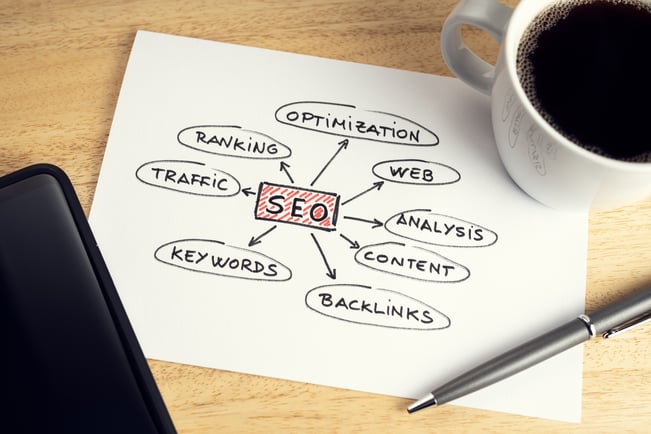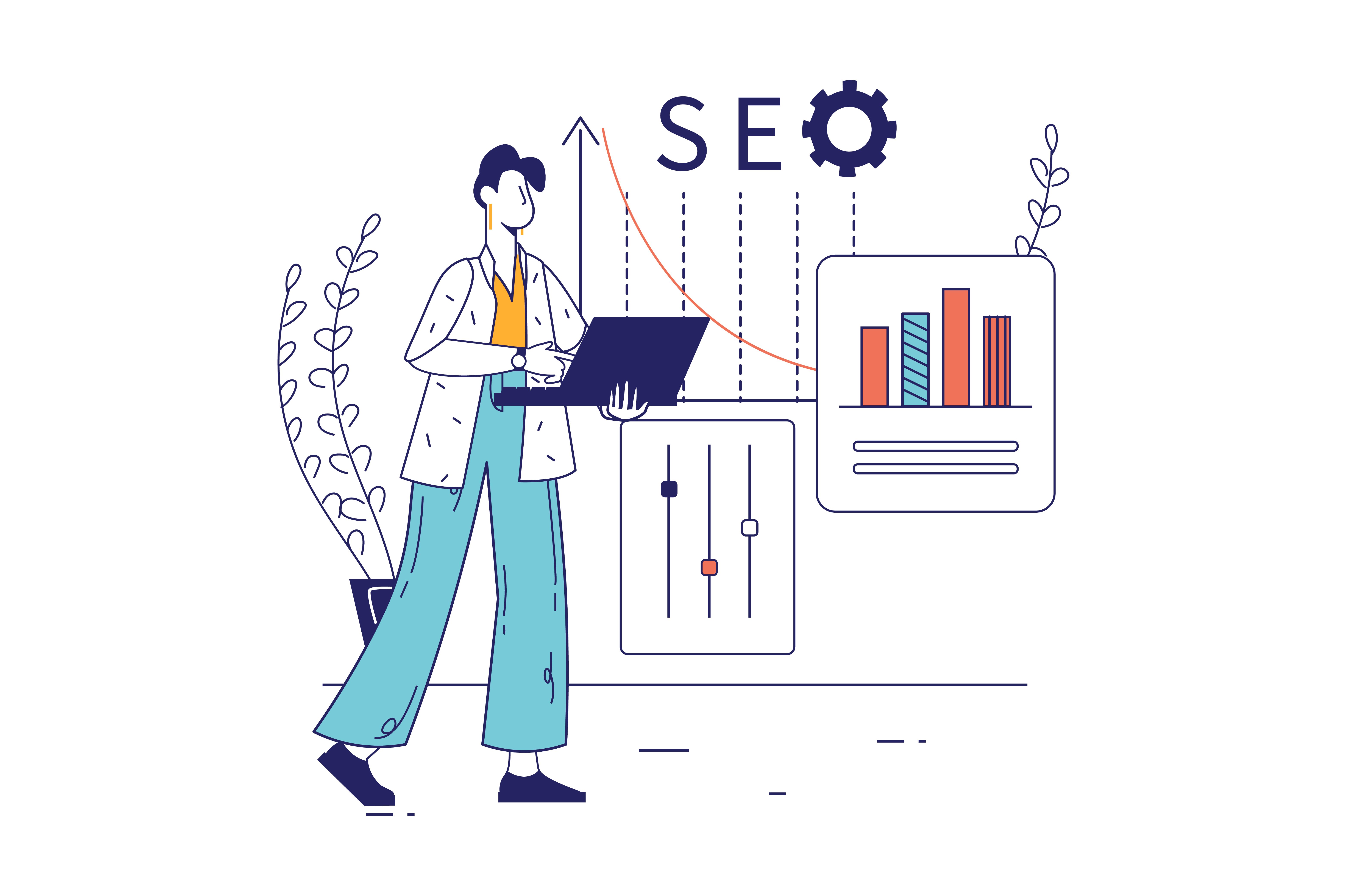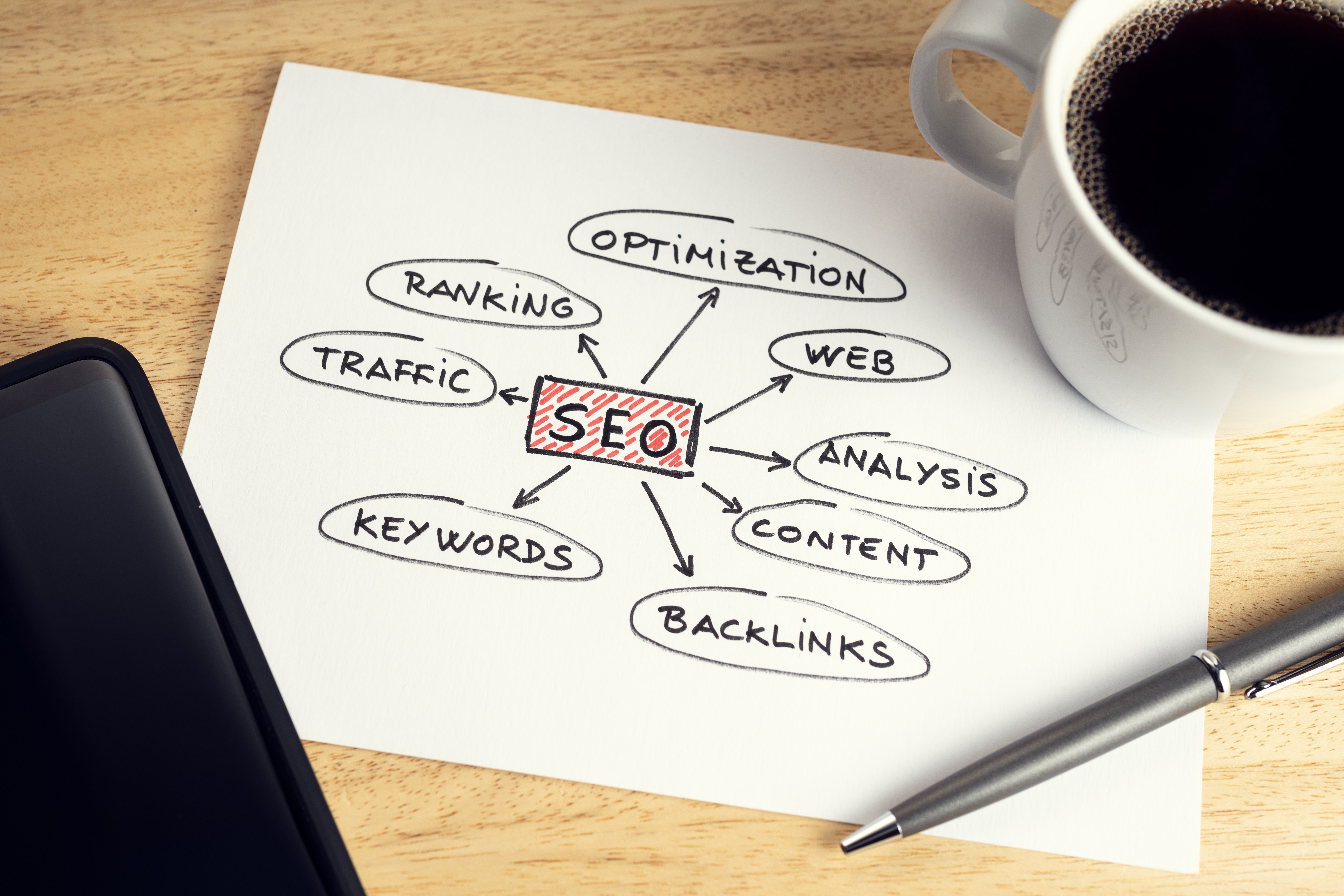
SEO or Search Engine Optimisation is the action of optimising your website and web pages to improve their online visibility. By following certain best practices, you can improve your online rankings for certain keywords in order to attract more relevant organic traffic through search engine results pages. If your website answers users’ queries well, you can then turn this traffic into leads and hopefully, paying customers.
Learn about the fundamentals of SEO in this simple guide for beginners. It is designed for Marketing Managers and CMOs to share with stakeholders so they can better understand what SEO is and why it's important to invest resources in it.
Why SEO?
SEO is a long-term strategy that is used to bring a consistent volume of relevant traffic to your site. Contrary to paid advertising, SEO takes time: 3-6 months before you can usually see results depending on the competition in your market. It requires investment in resources but you don’t need to pay for the traffic like you do with ads which makes it a more sustainable solution. It is also harder to catch up on a competitor who has been investing in SEO strategy for years.
How it works
Google (and other search engines like Bing) decides how to rank specific pages based on criteria that are all included within their algorithm (over 200 ranking factors). Search engine algorithms are updated on a daily basis (six times a day on average) but there are also bigger updates that happen regularly called ‘core algorithm updates’. These updates can change or evolve what is considered best practice which means SEO is never fully static and should evolve with the algorithm. What worked 5 years ago, won’t necessarily work now which is why it's important to invest in SEO efforts.
Main elements of SEO
On-Page SEO – optimisations that can be added directly to a page
- Meta title & meta description – the text that appears within search results needs to be optimised towards your target keywords and enticing for people to click through.
- Headings – your page needs to have clear headings in a logical order so that Google can understand what it’s about.
- On-page copy – your copy needs to be optimised towards your target keywords (using natural, human language) and answer the right search intent. It needs to follow the EEAT guidelines (Experience, Expertise, Authoritativeness, Trustworthiness).
- Links – it’s important to add links to relevant pages within your website to push people to convert or spend more time on your site. It’s also good practice to add some links to relevant, authoritative websites (usually in blogs or guides) to cite your sources.
- Images – size, name, and alt text need to be optimised so the page loads fast and you can rank in Google images. It also impacts your site’s accessibility to users with visual impairments.
- URL – you can optimise your URL to be easily readable and short.
Off-Page SEO – optimisations that are done outside of your website/pages
- Inbound links – links coming from external websites and linking to your page – these help Google understand whether you have good authority across the internet.
- Citations – how often your business is mentioned (without a link) across the internet and how consistent your details are (name, phone number, address).
- Social mentions – being mentioned by others on social media and having active accounts can help Google determine your authoritativeness.
- Business Profiles – these help you rank locally and are also used by search engines to gather more data about your business. If well optimised, they can bring organic traffic to your site and help you rank in maps results.
Technical SEO – optimisations that are done across your whole website
- Crawlability – crawling is the discovery process used by search engines to find and read content online. Without good crawlability, your website content may not be discovered and indexed by search engines, which means it won’t appear in search results.
- Indexability – analysis of content found online, and its addition to search engine indexes. Content which is not indexable will not appear in search engine results.
- Internal linking – links within your website help search engines locate content and understand how pages relate to each other. It helps rank the most important pages on your website.
- Page experience – failing to provide a positive experience means your site can be downgraded and rank lower than competitors.
- Page speed – this is closely linked to page experience and will affect both organic rankings and users leaving your site.
- Mobile experience – Google operates a ‘mobile first’ approach meaning they mainly review the mobile version of your site for indexing and ranking purposes. If your mobile experience is poor, you’ll be less likely to rank.
- JavaScript – improving JavaScript elements helps with crawlability, indexing, and speed.
- Security – security issues can cause serious damage including your site being permanently excluded from search engine results.
- Hreflang – this attribute tells search engines which language you are using on a specific page, so they can serve the appropriate content to users searching in that language. This needs to be set up correctly for multi-language sites.
Combining these elements
These three elements must be worked on concurrently if you want your website to be visible in search engines. This means you cannot rank well by only focusing on quality content and ignoring technical issues.
- On-page optimisations will help your specific pages to rank well via high quality content (as defined by Google).
- Off-page optimisations will help specific pages as well as your overall site to rank well by signalling your authority and popularity to search engines.
- Technical optimisations will boost your overall site by making it easily available to be discovered by search engines and provide overall good user experience so people want to use it.
The order in which you should review these items will depend on your specific site, your business goals and priorities, and your competitors. The level of investment will have to be greater than your competitors if you want to beat them. This means if their site is highly optimised, yours will also have to be.
These elements should always be reviewed in line with what’s best for your audience. Although using these tactics will help you to rank higher in search engine results, if you don’t cater correctly for your audience, these efforts won’t lead to any revenue. Your audience’s needs should always come first and SEO should be used to enable you to reach your audience.
Target keywords for SEO
Organic search is all about matching queries with a page that gives the right answer. That’s why SEO is highly focused on keywords: a term or a phrase that users search for online. Keywords can be one word or a collection of words.
To find these keywords, we use tools that provide the phrases that people search for related to specific themes. These tools give us useful information like number of monthly searches, how difficult it might be to rank #1 for the term, and how expensive it might be to advertise on this term, and this data is based on a specific country that you can define.
From this, we select a handful of terms – usually less than 100 – to track our progress against. The keywords selected should have the right intent which means your website/page can answer the question of the users in a satisfactory manner. This should be favoured over any metrics as Google will not show your page if it doesn’t give the right answer, however well optimised and authoritative your website is.
We use these tracked keywords to give us an idea of our organic performance against competitors. Are we ranking better than competitors on these terms that are key to our business? Are we improving or worsening our rankings over time?
However, your website will be ranking for many more terms overall and our efforts won’t be limited to this selection of keywords. The idea is to have a metric we can use to estimate our performance but it shouldn’t be measured solely through this. We’ll use it in conjunction with actual organic traffic hitting the site and leads or revenue coming from this channel as well as other metrics that might be useful depending on your goals.

Inspired to begin your SEO strategy but need a bit of help?
SEO activity and strategies are complex and will need to be adapted to suit your business needs and goals. Get started today on implementing or refining your digital marketing strategy with SEO in mind by reaching out to our team of experts.
Enhanced User Experience
Troubleshoot your questions, explore our expertise in SEO or get advice from our experts - Every situation and goal is different!
Lorem ipsum dolor sit
Lorem ipsum dolor sit amet, consetetur sadipscing elitr, sed diam nonumy eirmod tempor invidunt ut labore et dolore magna aliquyam erat, sed diam voluptua. At vero eos et accusam et justo duo dolores et ea rebum. Stet clita kasd gubergren, no sea takimata sanctus est Lorem ipsum dolor sit amet.
Lorem ipsum dolor sit Lorem ipsum dolor sit amet, consetetur sadipscing elitr, sed diam nonumy eirmod tempor invidunt ut labore et dolore magna aliquyam erat, sed diam voluptua. At vero eos et accusam et justo duo dolores et ea rebum. Stet clita kasd gubergren, no sea takimata sanctus est Lorem ipsum dolor sit amet. Lorem ipsum dolor sit amet, consetetur sadipscing elitr, sed diam nonumy eirmod tempor invidunt ut labore et dolore magna aliquyam erat, sed diam voluptua. At vero eos et accusam et justo duo dolores et ea rebum. Stet clita kasd
Lorem ipsum dolor sit amet, consetetur sadipscing elitr, sed diam nonumy eirmod tempor invidunt ut labore et dolore magna aliquyam erat, sed diam voluptua. At vero eos et accusam et justo duo dolores et ea rebum. Stet clita kasd gubergren, no sea takimata sanctus est Lorem ipsum dolor sit amet. Lorem ipsum dolor sit amet, consetetur sadipscing elitr, sed diam nonumy eirmod tempor invidunt ut labore et dolore magna aliquyam erat, sed diam voluptua. At vero eos et accusam et justo duo dolores et ea rebum. Stet clita kasd










